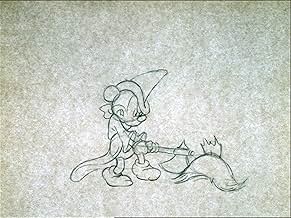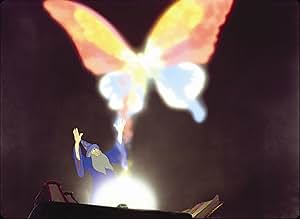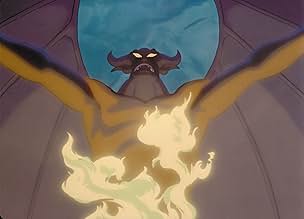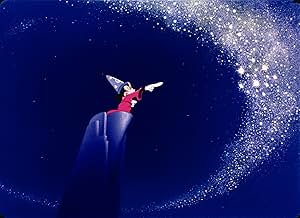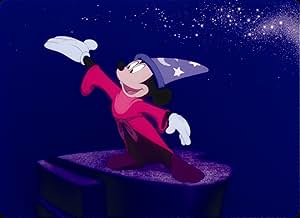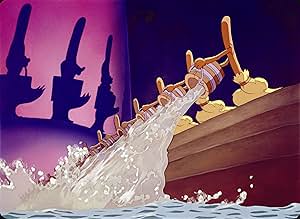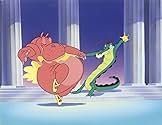A series of eight famous pieces of classical music, conducted by Leopold Stokowski and interpreted in animation by Walt Disney's team of artists.A series of eight famous pieces of classical music, conducted by Leopold Stokowski and interpreted in animation by Walt Disney's team of artists.A series of eight famous pieces of classical music, conducted by Leopold Stokowski and interpreted in animation by Walt Disney's team of artists.
- Awards
- 8 wins & 1 nomination total
- Narrator: Deems Taylor overdubs (2000 restoration)
- (voice)
- (uncredited)
- Mickey Mouse (segment 'The Sorcerer's Apprentice')
- (voice)
- (uncredited)
- Narrator (1982 version)
- (voice)
- (uncredited)
- Percussionist
- (uncredited)
- Narrator (1985 version)
- (voice)
- (uncredited)
- Soloist (segment 'Ave Maria')
- (singing voice)
- (uncredited)
- Violinist
- (uncredited)
Storyline
Did you know
- TriviaDuring production, the animators were given no instructions for coloring. Walt Disney instructed them to use any colors they wanted, which was a first.
- GoofsWhen introducing the "Pastoral" sequence, Deems Taylor mixes Greek and Roman names of deities: Bacchus, Vulcan and Diana are Roman; Zeus, Iris and Morpheus are Greek. Apollo is the only one whose Greek and Roman equivalents have the same name.
- Quotes
Mickey Mouse: [Pulling on Stokowski's coat] Mr. Stokowski! Mr. Stokowski!
[Mickey whistles to get Stokowski's attention]
Mickey Mouse: My congratulations, sir!
Leopold Stokowski: [shaking hands with Mickey] Congratulations to you, Mickey!
Mickey Mouse: Gee, thanks! Hehe! Well, so long! I'll be seeing ya!
Leopold Stokowski: Goodbye!
- Crazy creditsThere are no closing credits of any kind. Not even the words "THE END" appear on the screen.
- Alternate versionsBefore the 1990 re-release, the film was shown with no credits other than the title and the RKO logo. Leopold Stokowski received a written credit only on the posters advertising the film. In the film's original roadshow release, not even the title was shown at the beginning of the film - that was saved for the intermission break.
- ConnectionsEdited into A World Is Born (1955)
- SoundtracksToccata and Fugue in D Minor, BWV 565
Composed by Johann Sebastian Bach
Orchestrated by Leopold Stokowski (uncredited)
Played by The Philadelphia Orchestra
Conducted by Leopold Stokowski
But oh what a film it is. Music by the best classical composers ever lived, performed by the Philadelphia Orchestra, hosted by Deems Taylor, featuring some the finest animated segments Disney had ever done. It's a stone cold classic, was from the very first moment, and it's a shame it didn't do so well. Luckily it has gone down in history as one of Disney's finest and will be watched and appreciated for centuries to come.
As for the individual segments, they're not of equal quality, though they are all very good in their own ways.
The opening segment, Toccata and Fugue in D Minor, is not one of my personal favourites, but it works as a good opening intro to the idea behind Fantasia and is pretty to look at in its own way. It hasn't aged as well as some of the other segments, but it does its job more than adequately.
Nutcracker Suite, on the other hand, is fantastic. Beautiful images, perfectly accompanied by one of the most recognizable pieces of music there is. After seeing this segment once, it's hard not to see fairies and seasons dancing around whenever you hear the piece.
And then there's The Sorcerer's Apprentice. Everyone knows this one and has most probably seen it, even if they haven't seen the whole film. It's the segment with the most story and is one of the strongest Mickey Mouse shorts ever made. Grandeur, funny and even a bit threatening, it's probably the film's strongest moment.
Rite of Spring is another one with a story, this time about the history of our small blue orb floating in the space. It's intriguing to watch, but once again the animation shows a bit of its age and it's perhaps even a little bit too ambitious for its running length. Not the strongest segment, but once again very good nonetheless.
The Pastoral Symphony and Dance of the Hours, the next two segment, are to me very similar and while they're both fine, I cannot admit to liking them all that much. They're mostly just general gallivanting and while that's fine and fits the music, it can become a bit boring. The Pastoral Symphony is also the segments that has aged the least gracefully with some really rough character designs.
Luckily we have Night on Bald Mountain and Awe Maria to close the film. And they are awe-inspiring. The devil on his lone mountain top is one of the scariest images Disney has ever produced and the rest of the segment is equally haunting, eerie and threatening. Which is why the following tranquility and quietness of Awe Maria works so well and allows you to drift over the finish line with a smile on your face and peace in your heart.
Fantasia is not a perfect film, but it's still one of the finest pieces of art I've ever seen and a perfect introduction to animated films meant for adults. As a child I found it slightly boring. As an adult I'm in awe.
- Vartiainen
- Jun 1, 2015
- Permalink
Details
- Release date
- Country of origin
- Official site
- Language
- Also known as
- Bach to Stravinsky and Bach
- Filming locations
- Production companies
- See more company credits at IMDbPro
Box office
- Budget
- $2,280,000 (estimated)
- Gross US & Canada
- $76,408,097
- Opening weekend US & Canada
- $980,798
- Feb 10, 1985
- Gross worldwide
- $76,411,978
- Runtime2 hours 4 minutes
- Color
- Sound mix
- Aspect ratio
- 1.37 : 1
Contribute to this page






